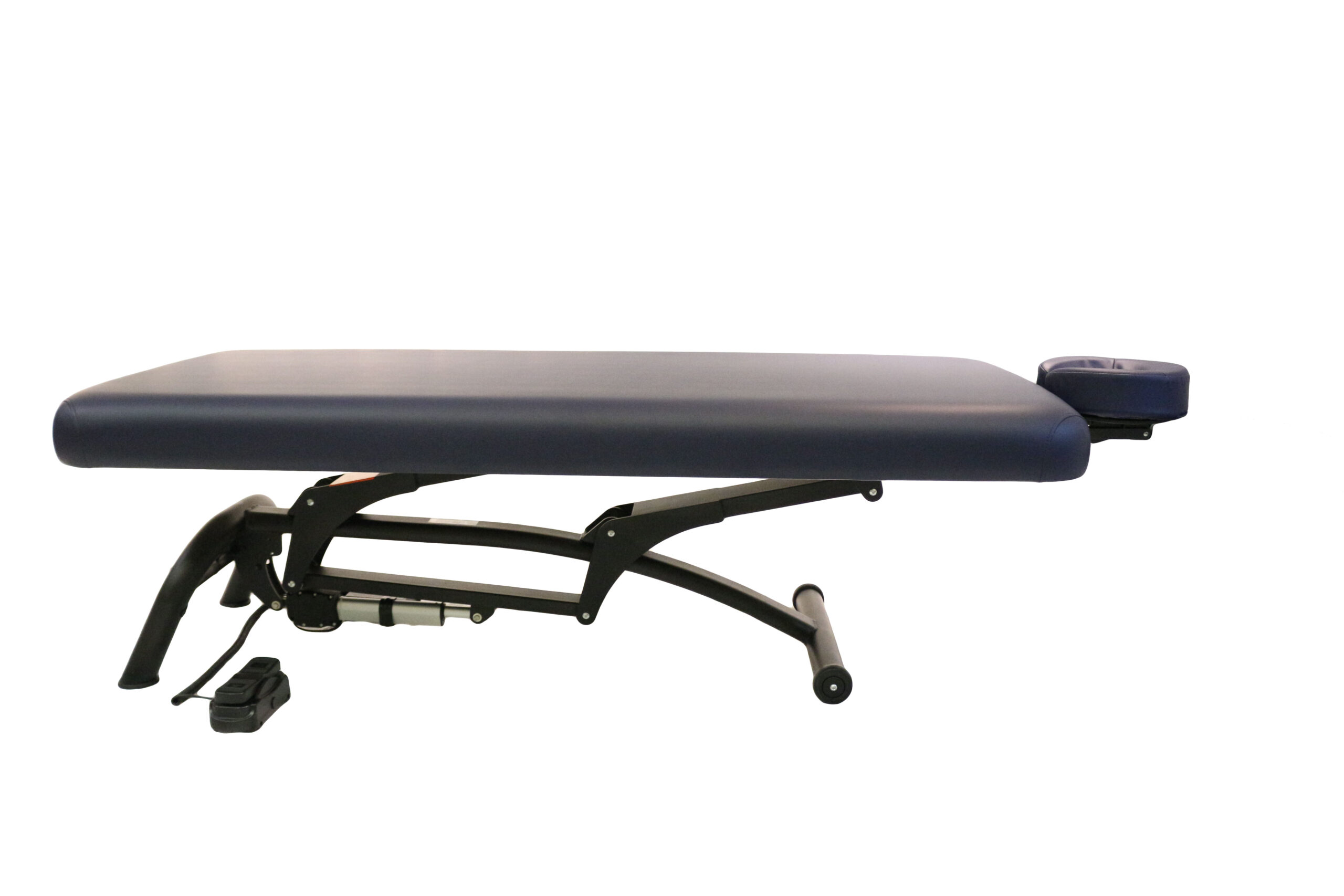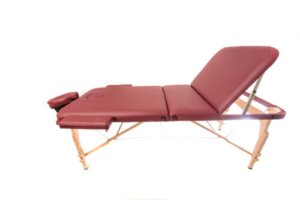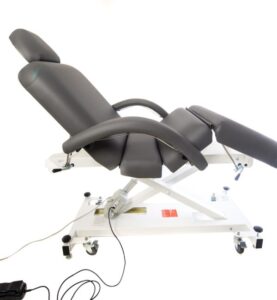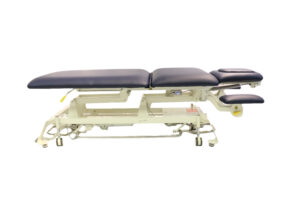How to Buy the Best Massage Table
At ViVi Therapy, we know how to buy the best massage table for your practice. We have built and sold thousands of massage tables and other equipment since 2008 when we started our supply branch of ViVI Therapy.
We have also grown our clinic since that time and as a practitioner and owner of ViVi Therapy, I understand what features are actually important to a practice.
At ViVi we have built tables with all features and level of quality, while keeping our price points affordable for everyone. I am here to help you choose the best table for your needs as a therapist, practitioner, or clinic or salon owner.
What to Consider:
When thinking about purchasing a new table you first have to ask yourself some very important questions:
Who will be using this table (both practitioner and patient)?
What features, size, height and weight capacity will they need?
If you have an integrated clinic then different features would be important to different practitioners that are using the same table.
Let’s look at some of the main features that you’ll need to consider.
1) Adjustability
There are 3 ways to adjust the height and features of a massage table: manually, electrically, or hydraulically. The options can be adjusted by hand-held device, foot pedal, or a touch bar around the table. Convenience and preference determine which one is best.
Manual Adjustment:
Wooden tables use 1 or 2 knobs that screw into designated holes on the legs to adjust to the desired height. Aluminum tables, most often, have telescoping legs that adjust more efficiently than the knobs. This can save time by simply pressing in the notch device while telescoping the leg to the desired height.
Another option is a spring loaded device with a screw to loosen and slide into the designated holes on the aluminum legs. This is probably a better option in an economy priced table.
Manual lift for back, leg, or neck features usually have preset angles. Back and leg lift features will always add extra weight to a table. Face rests, or face cradles, can have easy bicycle lock adjusting features for patients’ neck and head comfort. An adjustable face cradle or face rest is superior to a face hole built into the table which often is uncomfortable for the client.
Electric Adjustment:
Electric height adjustments are also known in the industry as “Hi Lo”. This is an important feature especially when using a table in a multi-practitioner environment. Assessment, treatment protocols and different height practitioners all benefit from easy electric hi lo adjustments. The greater the range of Hi Lo the more versatile the table. Check out our featured multi adjustable table here its hi lo is 20 – 40 inches.
Electric lift tables can have foot pedals, hand-held controllers, or a foot activation bar to adjust the height. Leg lifting features save treatment room space by eliminating the need for a lumbar and knee bolster or pillows. Back, neck, and pelvic lifts are useful in a clinic with practitioners of varying specialties and aging or pregnant clientele.
Don’t be deterred by an electric table with manual leg and back lifts, the lifting feature are still touch sensitive and not hard to adjust if the table is well built.
ViVi Therapy Luxe Lift Multi Adjustable Electric Table
2) Width and Length
Width is key to comfort for both the person receiving the treatment and the practitioner. Tables are most commonly around 6 feet, or 72 inches, long and have an additional 8-12 inches for the face cradle and cushion. Massage table extenders are available for both the head and foot of the table. The extensions can usually add up to 6 inches in length.
The wider the table the more comfortable larger people will be on it. Wide tables need to be lower to the ground for the person working on it, especially if the practitioner is not very tall. Elderly clients tend to like wider tables as well because they feel safer on them. The most common widths range from 28-32 inches wide for most kinds of massage therapy tables. Physiotherapy and Chiropractic tables are often more narrow. Once again, this is up to the personal preference of the practitioner and based on the clients’ needs.
3) Material
Dense foam gives more support and lasts longer, while softer foam is more comfort focused for the client. Just like your mattress at home, therapeutic tables are often constructed with layers of dense foam and a top layer of soft or even memory foam to ensure your client’s comfort.
Economical and more entry level tables often have less foam height. Manufacturers can cut costs on the foam knowing that people don’t sleep on the table and fleece comfort pads can be added for additional cushion. Treatment techniques that require a firm surfaced table can be performed on a table with thinner, denser foam.
Eco-friendly foam is most desirable, as is PU vinyl over PVC.
4) Weight
As a rule: The larger and more features a table has, electric, stationary, or portable, the heavier the weight will be.
Lightweight and portable is usually the only choice for mobile massage. Lugging a cumbersome table up stairs and into a house will definitely have someone changing their mind about mobile massage in a hurry. Different manual adjusting features will change the weight of the portable table as well.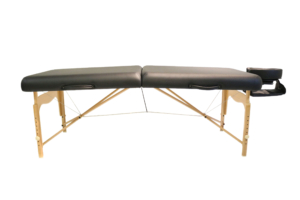
An elevated feature of a portable table to reduce weight is to exchange the wooden leg frame for aluminum or make the platform out of a lighter material than wood.
Buyer Beware: Inexpensive aluminum tables under $199CAD price
point can be poor quality for both adjustability and weight bearing.
ViVi Therapy Mini Dreaming Massage Table
Some practitioners might not concern themselves when carrying an extra 15-20lbs of table weight, while others might have issues carrying around a heavy portable table. Portable tables made of wood or that have features like manual lifts tend to be heavier.
If you are setting up the table in a room and don’t plan on moving it much then buy a larger, more comfort oriented table of wood or aluminum depending on the esthetic you are after.
5) Accessories
Many accessories are included in the purchase of the table. Face cradle, arm rests, side arm extensions, length extensions, and headrest extensions are some of the common accessories that can be included in a purchase. These can also be bought separately to upgrade or replace parts.
Buyer Beware: A table with many bundled accessories
can sometimes be a disguise for a poor quality table,
remember that you get what you pay for.
Electric tables range in price based on lift, tilt, break, and drop features. Sometimes the professional buying the table will also play a role in price point. Beyond your budget, knowing which features are best for your practice is the first step.
Many higher end Physiotherapy and Chiropractic tables tend to be sold with a base price and each feature is added on to the base price. This can be misleading when surfing the internet for the best priced professional table, you will have to click through to be sure of the “real” price.
An integrated clinic with multiple disciplines might want to look at a table with more features than a singular disciplined practice. The “Hi Lo” feature will be the most important when more than one practitioner is using the table.
Having wheels on the table so that it can be moved around the clinic space may or may not be needed. Locking wheels is a great feature for both mobility and being able to move the table to clean underneath.
6) Practices (Mobile, Massage, Acupuncture, Craniosacral, Deep Structural Integration, Physio/Chiro Massage, Feldenkrais)
When choosing the right table considering how it will be servicing your practice is key. For clinics with multiple disciplines, using a table with electric height adjustment is mandatory. Each practitioner will, most likely, require different heights.
When using the table for mobile massage or Physiotherapy, weight is a key factor. As well, students buying their first table might want to invest a bit more money and get a truly lightweight professional table that will carry them through their career from student to possible mobile work once they have graduated.
For single practitioner, who won’t adjust the table frequently, a larger portable table or a stationary table is an option. Heavier portable and stationary tables can have great features without the high price point and are still adjustable.
Acupuncturists love a great armrest that doesn’t wobble too much and has room to res the arms comfortably. Armrests allow acupuncture needles to be positioned on the arms for treatment. Side armrests are also popular for Acupuncturists when they have their clients in supine.
Leg and back rests are desirable for Acupuncturists as well because clients often rest with the needles in for a while and comfort is key to therapeutic outcomes. If an elevated backrest or leg lifts are added to an Acupuncturist’s table, then electric or manual feature can add much desired comfort for the patient while receiving any Traditional Chinese Medicine treatment (Cupping, Tui Na, or Acupuncture).
Craniosacral Therapy can benefit from a wider table with more memory foam for comfort as there is mostly supine lying for this style therapy. A wider table allows the therapist to use part of themselves more easily to perform the treatment. Adding a head or foot extender is great for the taller client that takes up the length of the table for when you need arm length for long craniosacral holds.
Deep structural integration type of bodywork such as rolfing, NMT MET, or deep tissue fascial work, requires the therapist to leverage their weight and use multiple positioning. These types of work are easily applied on a larger, wider table of 30-32 inches wide.
A screw down stabilizer to keep the locked wheels in a fixed position especially if on a slippery wood, laminate, or uneven floor is a great additional feature of some higher-end electric tables.
Physio and Chiropractic care can sometimes trend to an older clientele. With older clienteles typically using a wider table, preferably with a back lift in case of vertigo or poor posture, is a good idea. Physio and Chiro massage can also benefit from a range of adjustable positions for the table for better adjustability.
Feldenkrais movement needs an extra wide table with firmer, thinner foam to allow the sense of pushing and pressing into the table from different angle and body parts.
With all of these in mind you are finally ready to start shopping!
It may seem a bit daunting at first if you are going in blind, but after focusing on what you actually need it becomes quite simple. You’ll want function and quality over gadgets. Gauging both can be a lot for some people, so list the functional aspects you are looking for and then find the quality you want.
Happy shopping!
